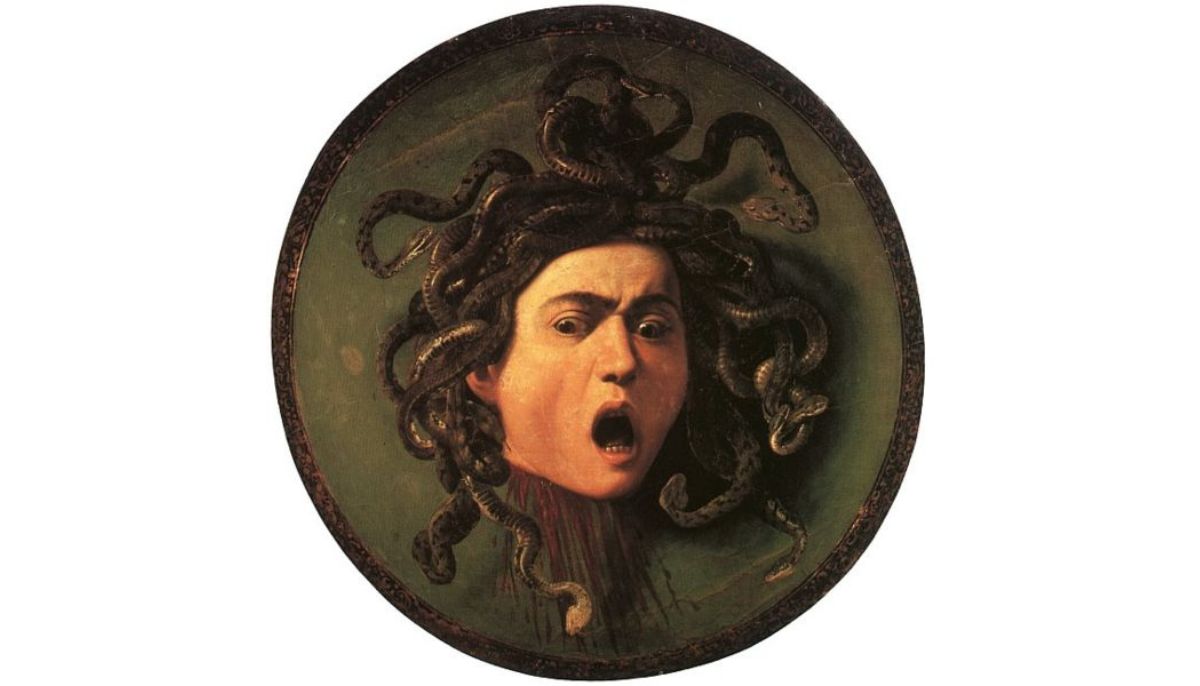In the vast tapestry of Greek mythology, few figures evoke as potent a blend of fascination and dread as Medusa. According to legend, Medusa was once a radiant priestess of Athena, revered for her beauty and devotion.
However, a transgression led to her transformation into a grotesque entity, her hair replaced by a writhing nest of snakes, and her once-rosy skin turned a ghastly shade of green. It is said that anyone who met her gaze was condemned to a stony fate.
What did Medusa look like?

In Greek mythology, Medusa is often depicted as a monstrous figure, a Gorgon, with snakes for hair, capable of turning anyone who met her gaze into stone.
This fearsome visage, however, was not her original form. Medusa was once a stunning mortal, renowned for her beauty, who served alongside Athena, the goddess of wisdom and knowledge.
The mythology of Medusa
Medusa’s story is a complex tapestry woven from threads of beauty, betrayal, and divine punishment. According to ancient texts, she was one of the three Gorgon sisters, born to the ancient marine deities Phorcys and Ceto.
While her sisters, Stheno and Euryale, were immortal, Medusa, tragically, was not. Gaia and the early sea deities Phorcys and Ceto are sometimes cited as her parents.
The Transformation of Medusa
The catalyst for Medusa’s transformation into a Gorgon was her affair with Poseidon. When Athena discovered this transgression within the sacred confines of her temple, her wrath knew no bounds.
The goddess punished Medusa in her fury, forever altering her appearance and destiny. This transformation, from a beautiful mortal to a petrifying Gorgon, marked the beginning of Medusa’s tragic descent into infamy.
- Was Athena protecting, instead of punishing, Medusa? Another version of the Myth offers a tantalizing different theory
Poseidon and Medusa
Medusa’s ill-fated affair with Poseidon was a pivotal moment in her story. Their union resulted in the birth of two remarkable children: Pegasus, the immortal winged horse, and Chrysaor, a figure of lesser renown.
This liaison with a god further deepened Medusa’s tragic narrative, ultimately setting the stage for her fateful encounter with the Greek hero Perseus.
Why was Medusa killed?
Perseus, the valiant Greek hero, embarked on a perilous quest to behead Medusa. This treacherous mission was set in motion at the behest of King Polydectes, who coveted the hand of Perseus’s mother.
Armed with divine artifacts—a mirrored shield from Athena, winged sandals from Hermes, a sword from Hephaestus, and Hades’s helm of invisibility—Perseus confronted the Gorgon
Perseus: The Hero’s Quest
Perseus bravely faced Medusa, cunningly utilizing her own reflection to outsmart her lethal gaze.
In a pivotal moment, he skillfully severed her head, unleashing a series of consequences that would transform her fearsome countenance into a formidable weapon in his possession.
This severed head symbolized immense protective power, finding its rightful place of honor on Athena’s shield and armor.
Was Medusa evil?
The character of Medusa in Greek mythology is complex, and whether she can be labeled as “evil” is a matter of interpretation.
One interpretation is that Medusa’s actions resulted from human desires and divine consequences. Though consensual, Her affair with Poseidon was seen as a betrayal of her vow of celibacy while serving Athena, ultimately leading to her curse. In this view, Medusa’s transformation was a punishment for breaking her oath.
However, some modern interpretations suggest that Medusa’s story can be read as a reflection of societal attitudes towards women and their sexuality. They argue that framing her as “evil” oversimplifies her character and ignores the deeper complexities of her narrative.
The symbolism of Medusa
Medusa’s image has permeated through the annals of art and literature, embodying terror and fascination. In ancient times, her likeness was employed for protective purposes, adorning statuary, bronze shields, and vessels. Over the centuries, artists and writers have drawn inspiration from Medusa’s tale, depicting her in various forms, from hideous monster to alluring maiden.
This enigmatic figure has not only endured in classical art but has also enjoyed a resurgence in contemporary pop culture.
From her origins as a revered priestess to her transformation into a Gorgon, Medusa’s tale is one of profound tragedy and enduring fascination. Through the ages, her story has been a canvas for exploring themes of beauty, betrayal, and the capriciousness of the gods. Medusa’s enduring legacy is a testament to the enduring power of Greek mythology and the complex depths of the human psyche.
Want to know more about the creatures and monsters of Greek Mythology?

Explore more articles like this in our broader series on Greek monsters. To delve even deeper into the world of mythical creatures, be sure to check out our comprehensive hub article on the monsters of Greek mythology.






